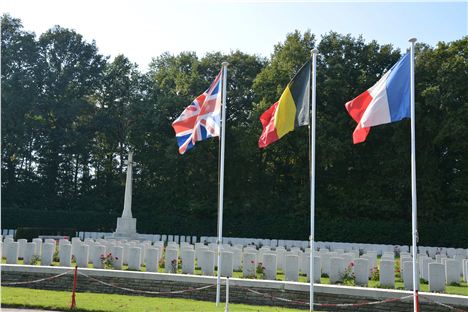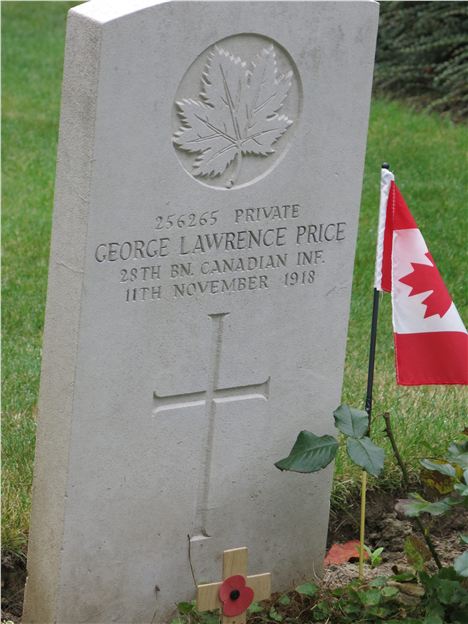REMEMBRANCE of the Great War will take many forms during 2014’s centenary commemoration. Rudyard Kipling’s words “Lest we forget” have never seemed more poignant now the last surviving combatants of the “War To End All Wars” – irony of ironies – have passed on.
'It was at that moment, towards midnight, that angels are supposed to have swooped out of the sky in the shape of archers, halting the Germans and allowing the British to escape under cover of darkness.'
A silent vigil by a simple cross in a turnip field seemed as good a start as any on a visit to see how preparations are going. The British soldiers renamed Ploegsteert Plugstreet. The name has stuck, much as the heavy earth of southern Belgium clung to their boots as they clambered over the parapet in December 1914 to engage the enemy in a game of football.
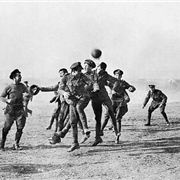 Football during the TruceIt was part of the extraordinary Christmas Truce up and down the line. The British Expeditionary Force commander Sir John French, aware of the likelihood of such fraternisation, had issued a warning about imminent German attack. “Be vigilant,” he thundered in message to all units. In vain. At Plugstreet cigarettes, carols and conversation were exchanged. The Hun had plenty of beer and sent over a barrel.
Football during the TruceIt was part of the extraordinary Christmas Truce up and down the line. The British Expeditionary Force commander Sir John French, aware of the likelihood of such fraternisation, had issued a warning about imminent German attack. “Be vigilant,” he thundered in message to all units. In vain. At Plugstreet cigarettes, carols and conversation were exchanged. The Hun had plenty of beer and sent over a barrel.
Elsewhere, 10 miles away across the French border near Armentieres, there was a 3-2 win for the Germans. We don’t know the Plugstreet score, but scant information isn’t deterring a re-enactment planned for December 19-21,1914. And it shouldn’t. After this brief chivalric gesture millions died in the trenches of the Western Front and, amid all that muddy chaos, the world changed forever. Some 900,000 Britons were slaughtered in the War. “Lions led by donkeys”, so apt.
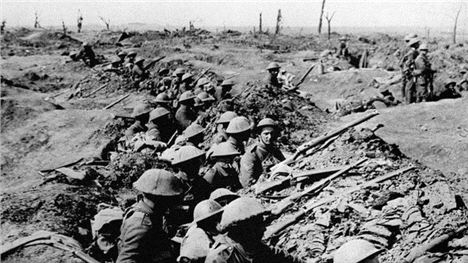 The trenches where so many perished in the mud PA:Pawire
The trenches where so many perished in the mud PA:Pawire
Those garrisoned at Plugstreet included one Winston Churchill. There is a plaque to him on the wall of the Town Hall. Following the ill-fated Gallipoli campaign, Churchill resigned from the Government on November 12 1915 and stated in his resignation letter he wished to serve with his own regiment, the Queens Own Oxfordshire Hussars. By the morning of the 18th he had left for France.
After initial carnage Plugstreet was in Allied hands for much of the war and was seen as a safe billet for Churchill and fellow future Prime Minister, Sir Anthony Eden. Just across enemy lines another world leader-in-waiting won an Iron Cross but not the promotion he craved – Corporal Adolf Hitler.
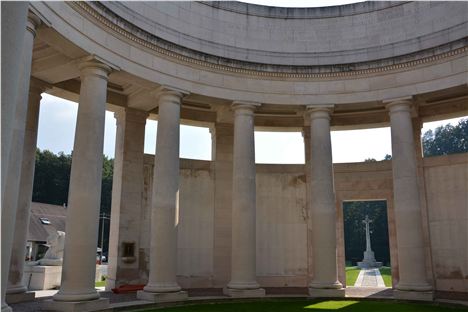 Inside the Memorial at Plugstreet
Inside the Memorial at Plugstreet
Today, the village is a quiet backwater dominated by the Plugstreet Memorial To The Missing – a large white mini-Menin created in 1931 and engraved with the names of 11,367 missing Commonwealth soldiers with no known grave. Their ghosts are in the very air of the district. Claude Verhaege, proprietor of the nearby L’Auberge Plug Street, runs guided tours.
Thomas Nash, who served here with the 4th Gloucesters in 1915, described it as "......a place of horrors. The gruesome relics of the earlier hand-to-hand fighting were still in evidence, and broken fragments of rifles and bayonets, half-buried bodies, swamped dug-outs and hastily built redoubts all told their story plainly. Everywhere were scenes of terrific fighting, and the wood was oppressive with their spirits of men slain in passion, not honest, healthy ghosts.”
A new Interpretation Centre is being built in time for the 100th anniversary to help new generations come to terms with this troubled past. The Truce cross at the field was erected at Christmas 1999 by The Khaki Chums, an association for military remembrance, who built their own trenches in tribute amid the worst rainstorm in 50 years. Few visitors would go to such extremes, but there is so much to do and see on individual visits during the centenary year. It should not just be the province of school parties.
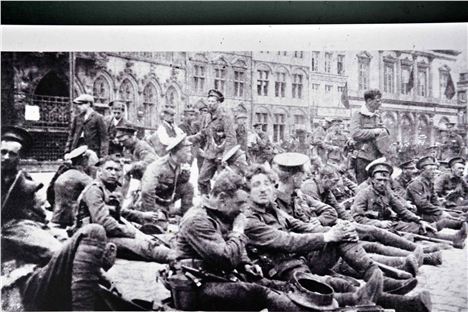 Shattered troops, preparing to go back to the Front
Shattered troops, preparing to go back to the Front
The obvious starting point is to visit one of the countless war cemeteries dotted across the sweeping Flanders countryside watered by so much blood. The major places of pilgrimage, Tyne Cot, the Menin Gate, and the museums at Passchendale and Ypres (now known by its Flemish name, Ieper) are covered by my colleague, Belinda Szonert in Flanders Fields – The Great War 100 Years On.
The rest of my personal pilgrimage was along a less-trodden route through Wallonia – one of Europe’s perennial battlegrounds – in particular, the contrasting cities of Mons and Liege.
Mons is both a fascinating base for Great War tourism and an attractive place to visit in its own right, set to become European Capital of Culture in 2015. Its centre certainly looks the part. The great Gothic collegiate church of Sainte-Waudru houses the shrine of the city’s patron saint (Waltrude in French), while the neighbouring belfry, in the Baroque style, dates back to the 17th century and is a World Heritage site.
It would have been easy to sit back in the vast cobbled Grande Place, nibble a whelk, sip a Duvel, but Mons’ significant role in the war soon drew us elsewhere.
 For the Fallen At St Symphorien Cemetery; below, nations united in tragedy
For the Fallen At St Symphorien Cemetery; below, nations united in tragedy
To St Symphorien Cemetery on the edge of town, set sombrely among fir trees next to the old lunatic asylum. Here two significant graves face each other in tragic juxtaposition. Private John Parr of the Middlesex Regiment, was the first British soldier to die in the War. He lies opposite the last Commonwealth victim, Private George Lawrence of Canada, killed just hours after a ceasefire was announced. Mons, which also witnessed the final British troop victim, Private Ellison, refers to itself as ‘The First and The Last”.
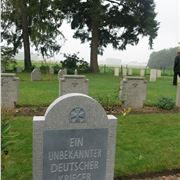 To an unknown warriorUnusually, St Symphorien houses the graves of German, British and Canadian soldiers (even some Russians, we noticed).
To an unknown warriorUnusually, St Symphorien houses the graves of German, British and Canadian soldiers (even some Russians, we noticed).
It was started by the Germans in 1914 to bury their own troops and some British, then was expanded when the Allies advanced in 1918.
There is a remarkably tranquility about the place tinged with an overwhelming sadness.
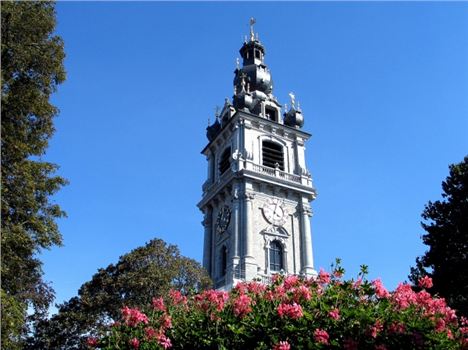 The Belfry in Mons – one of many visitor attractions
The Belfry in Mons – one of many visitor attractions
Mons was the site of the first battle fought by the British Expeditionary Force on August 23 and 24, 1914. Hugely outnumbered, battle-hardened professional troops performed heroics before being forced to retreat.
On a grey Sunday morning, I stood under the rail bridge by the broad Mons-Conde Canal, feeling totally humble as I read the plaque to two valiant Brits who earned the War’s first Victoria Crosses.
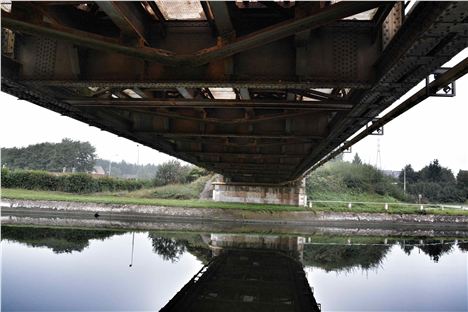 Mons – the rail bridge across the canal where two VCs were won
Mons – the rail bridge across the canal where two VCs were won
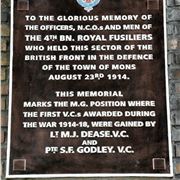 Lt Maurice James Dease of the Royal Fusiliers was awarded his posthumously. As the only man left from his machine-gun section and desperately wounded, he held his position. When he was evacuated to an ambulance, where he died, young Pte Sydney Frank Godley took over the gun, ensuring his comrades could withdraw before he was eventually captured. At the nearby Obourg Station another soldier, from the Middlesex regiment, similarly held the Germans at bay during the mass withdrawal. Across the two days British losses were over 4,000.
Lt Maurice James Dease of the Royal Fusiliers was awarded his posthumously. As the only man left from his machine-gun section and desperately wounded, he held his position. When he was evacuated to an ambulance, where he died, young Pte Sydney Frank Godley took over the gun, ensuring his comrades could withdraw before he was eventually captured. At the nearby Obourg Station another soldier, from the Middlesex regiment, similarly held the Germans at bay during the mass withdrawal. Across the two days British losses were over 4,000.
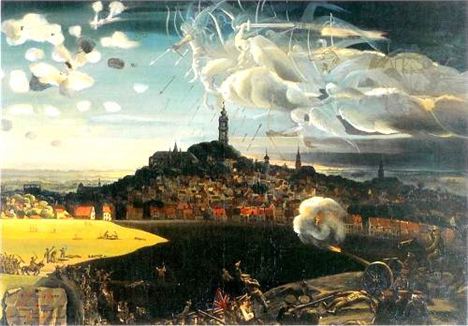 Angel of Mons – one of many depictions of the miracle
Angel of Mons – one of many depictions of the miracle
The retreat is famous for one of the great legends of the War – the Angel of Mons. The story goes like this: on the evening of the 23rd the Eighth Brigade were in danger of encirclement and annihilation. It was at that moment, towards midnight, that angels are supposed to have swooped out of the sky in the shape of archers halting the Germans and allowing the British to escape under cover of darkness. Mass hallucination of exhausted troops, trick of the weather or the light, who knows?
Sceptics point to a subsequent short story by Welsh fantasy author Arthur Machen, The Bowmen, loosely based on accounts of that night. To the author’s exasperation, it was treated as pure fact and the blossoming legend used for propaganda purposes.
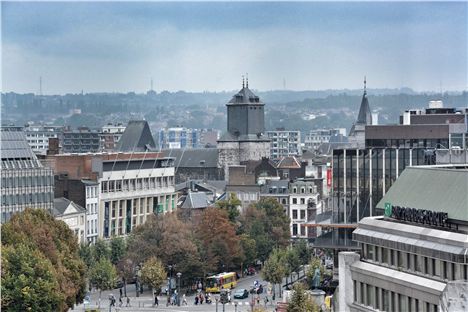 Liege, a strategic target for the German invaders
Liege, a strategic target for the German invaders
Another miracle in the early days was the fortitude of the plucky Belgians – denied neutrality – in halting the German plan to wrap up the initial war in the West in six weeks. Liege was the stumbling block with its ring of 12 fortresses. One of these, Fort de Loncin, is preserved as a “Necropole de la Grande Guerre”, a national mausoleum cum museum.
Thick concrete that couldn’t be penetrated by any existing weapon was the material used when the forts were constructed in the early 1880s. By 1914, that was no longer the case. Big Bertha was born – a super gun that blew Loncin to pieces after the ammunition store was hit.The ruthless German bombardment had caused earth tremors as fas away as the Netherlands. Even afterwards the garrison’s survivors fought to the bitter end in hand to hand combat.
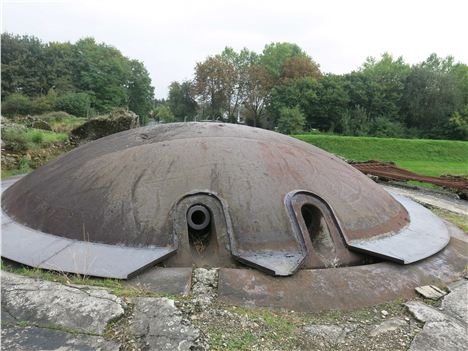 Fort Loncin – the tangled remains of the huge explosion
Fort Loncin – the tangled remains of the huge explosion
 The ringIt’s worth a visit to Loncin, even if its prime role is to mark Belgian national pride in buying time for the British and French forces. The most poignant exhibit is the wedding ring inscribed “Leonie et Louis unis le 20 Juin 1908” found on the remains of a hand dug up on the site in 2007, which enabled one victim to be finally identified, via DNA, and his family to find peace.
The ringIt’s worth a visit to Loncin, even if its prime role is to mark Belgian national pride in buying time for the British and French forces. The most poignant exhibit is the wedding ring inscribed “Leonie et Louis unis le 20 Juin 1908” found on the remains of a hand dug up on the site in 2007, which enabled one victim to be finally identified, via DNA, and his family to find peace.
The Fort museum features the archaic 19th century uniforms worn by the tiny Belgian army and the quaint dog sleds used to transport weapons. Alongside, in the fort’s remaining tunnels, are the late 19th century “state of the art” facilities – electric generators and so on – that belied the fact this was basically a doomed, modern medieval castle.
Warfare had moved on. Poison gas, Zeppelins, tanks, the sense of utter futililty were still to come. No place for ad hoc chivalry. No place for a game of football.
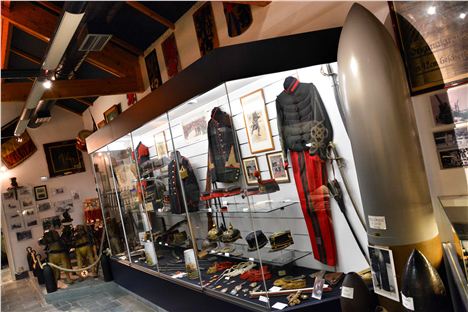 Big Bertha shell in Fort Loncin's museum
Big Bertha shell in Fort Loncin's museum
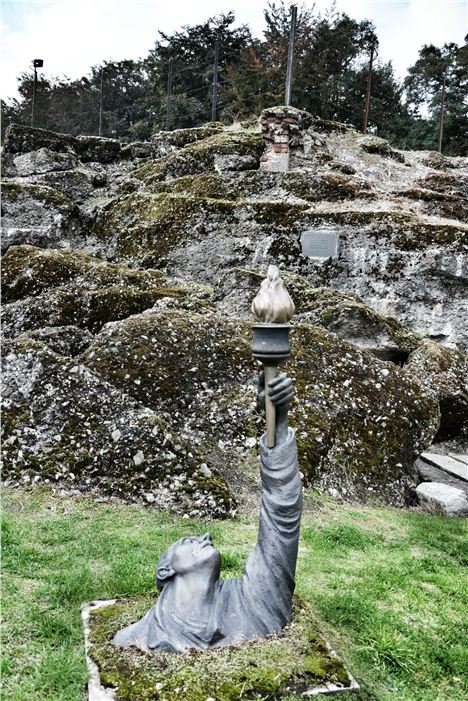 Moving memorial at Loncin to the brave Belgians who gave their lives
Moving memorial at Loncin to the brave Belgians who gave their lives
Many of the pictures (the best) are by Simon Kench, the rest are mine or from archive.
Fact file
Getting there
Prices for a five-day return ticket with P&O Ferries start at £109 each way for a car and two passengers on the overnight Hull-Zeebrugge service including a two berth inside cabin. P&O Ferries also operates the short Dover to Calais crossing with a five-day return ticket starting at £30 each way for a car and up to nine passengers. Further information and reservations at www.poferries.com or by phoning 08716 64 64 64.
Tourism websites
Belgium Tourism Office: Brussels and Wallonia: www.belgiumtheplaceto.be
Useful Flanders battlefield guides
www.visitbelgium.com/?page=world-war-i
www.visitflanders.co.uk/discover/flanders-fields/
www.ww1battlefields.co.uk/
Ploogsteert
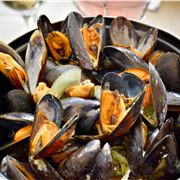 Plugstreet Battlefield Tours – visit this link and I definitely recommend the shrimp and moules frites at L’Auberge Plugstreet, Rue de Messines 159, 7782 Plugstreet www.auberge-ploegsteert.be
Plugstreet Battlefield Tours – visit this link and I definitely recommend the shrimp and moules frites at L’Auberge Plugstreet, Rue de Messines 159, 7782 Plugstreet www.auberge-ploegsteert.be
Mons
Tourist Office, Grande Place, 22. www.visitmons.be
Available there, the Mons 14-18 Battlefield Guide is an excellent print guide to the War sites. New self-guided tours will be launched for summer 2014. Modern interactive signs will guide visitors along the route and a Smartphone app will show archive documents and provide additional information.
A new museum is to open in City of Culture year to commemorate the opening Battle of Mons and there is talk of staging Britten’s War Requiem in the Grande Place and even of a visit by the Queen in August 14.
Meanwhile, you can visit the Military History Museum, Rue des Fripiers, Mons. Large collection of headwear, gas masks, weapons, and uniforms from different countries.
In Mons we stayed at Best Western Plus Lido, Rue des Arbalestriers 112. Rooms from 80 euros. www.lido.be
We ate at the Vilaine Fille, Mauvais Garçon restaurant, Rue de Nimy, 55. www.vilainefillemauvaisgarcon.be
Liege
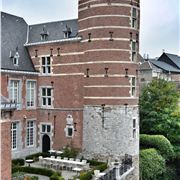 Crowne Plaza, LiegeThe Crowne Plaza in Mont Saint Martin, 9-11 www.crowneplazaliege.be makes a characterful base with a good restaurant. Five-star comfort in a 15th century building. Doubles from 109 euros.
Crowne Plaza, LiegeThe Crowne Plaza in Mont Saint Martin, 9-11 www.crowneplazaliege.be makes a characterful base with a good restaurant. Five-star comfort in a 15th century building. Doubles from 109 euros.
The Fort de Loncin: www.fortdeloncin.be
Liege Tourism: www.liege.be/tourisme-en
Background
Expect a plethora of books about the Great War in the coming months. Meanwhile, for two very different approaches try John Keegan’s magisterial military history, The First World War (Pimlico, £18.99 pb) and Swedish social historian Peter Englund’s The Beauty And The Sorrow (Profile Books £25 hb), a brilliant almost novelistic collage of ordinary people’s experiences.









